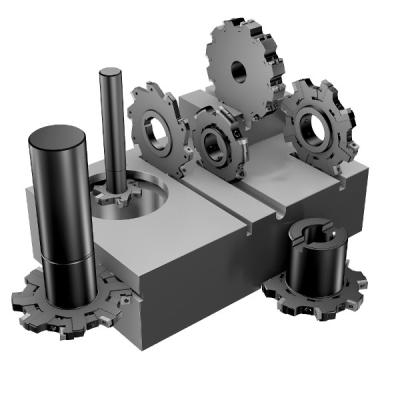
Cutting tool and tooling systems specialist Sandvik Coromant has made its high performance steel milling grade, GC1130, available for use with CoroMill QD and CoroMill 331 groove milling cutters. GC1130, which is the latest Zertivo grade from Sandvik Coromant, delivers high metal-removal rates and secure performance levels in both wet and dry machining operations.
Already available for use with CoroMill 390, CoroMill 490 and CoroMill 495 shoulder and chamfer milling systems, this expansion of the application area makes the benefits of Zertivo technology, such as longer tool life and secure machining, available to a wider user profile.
Machine shops can now use grade GC1130 inserts with CoroMill QD for deep and narrow grooving in both external and internal roughing and finishing operations. For additional groove milling requirements, GC1130 inserts can also be applied to CoroMill 331, a multi-purpose side and facemilling cutter. This versatile tool is capable of grooving, double half side milling, shoulder milling, facemilling, back facemilling, gang milling and circular ramping.
In total, GC1130 is now introduced to seven additional product families. Along with CoroMill QD and CoroMill 331, the insert grade is available for use with CoroMill 790 and T-Max long edge (shoulder milling), CoroMill Century (face milling), CoroMill 170 and CoroMill 176 (gear milling).
“Issues such as flaking, abrupt chipping and thermal cracks are commonly encountered when milling materials in the ISO P application area, especially when faced with unfavorable tool paths, deep cavities or when using coolant,” says Björn Ericsson, project manager. “We have developed GC1130 to help machine shops overcome the consequential effects of reduced insert life and unstable production.”
Manufactured using Zertivo—a PVD production technology that is designed to enhance the grade’s advantages—GC1130 offers high edge-line security and reduced flaking. In addition, a high Cr content, fine-grain substrate delivers high resistance to thermal cracks, helping ensure long and reliable tool life.
Contact Details
Related Glossary Terms
- coolant
coolant
Fluid that reduces temperature buildup at the tool/workpiece interface during machining. Normally takes the form of a liquid such as soluble or chemical mixtures (semisynthetic, synthetic) but can be pressurized air or other gas. Because of water’s ability to absorb great quantities of heat, it is widely used as a coolant and vehicle for various cutting compounds, with the water-to-compound ratio varying with the machining task. See cutting fluid; semisynthetic cutting fluid; soluble-oil cutting fluid; synthetic cutting fluid.
- facemilling
facemilling
Form of milling that produces a flat surface generally at right angles to the rotating axis of a cutter having teeth or inserts both on its periphery and on its end face.
- gang cutting ( milling)
gang cutting ( milling)
Machining with several cutters mounted on a single arbor, generally for simultaneous cutting.
- grooving
grooving
Machining grooves and shallow channels. Example: grooving ball-bearing raceways. Typically performed by tools that are capable of light cuts at high feed rates. Imparts high-quality finish.
- milling
milling
Machining operation in which metal or other material is removed by applying power to a rotating cutter. In vertical milling, the cutting tool is mounted vertically on the spindle. In horizontal milling, the cutting tool is mounted horizontally, either directly on the spindle or on an arbor. Horizontal milling is further broken down into conventional milling, where the cutter rotates opposite the direction of feed, or “up” into the workpiece; and climb milling, where the cutter rotates in the direction of feed, or “down” into the workpiece. Milling operations include plane or surface milling, endmilling, facemilling, angle milling, form milling and profiling.
- physical vapor deposition ( PVD)
physical vapor deposition ( PVD)
Tool-coating process performed at low temperature (500° C), compared to chemical vapor deposition (1,000° C). Employs electric field to generate necessary heat for depositing coating on a tool’s surface. See CVD, chemical vapor deposition.

